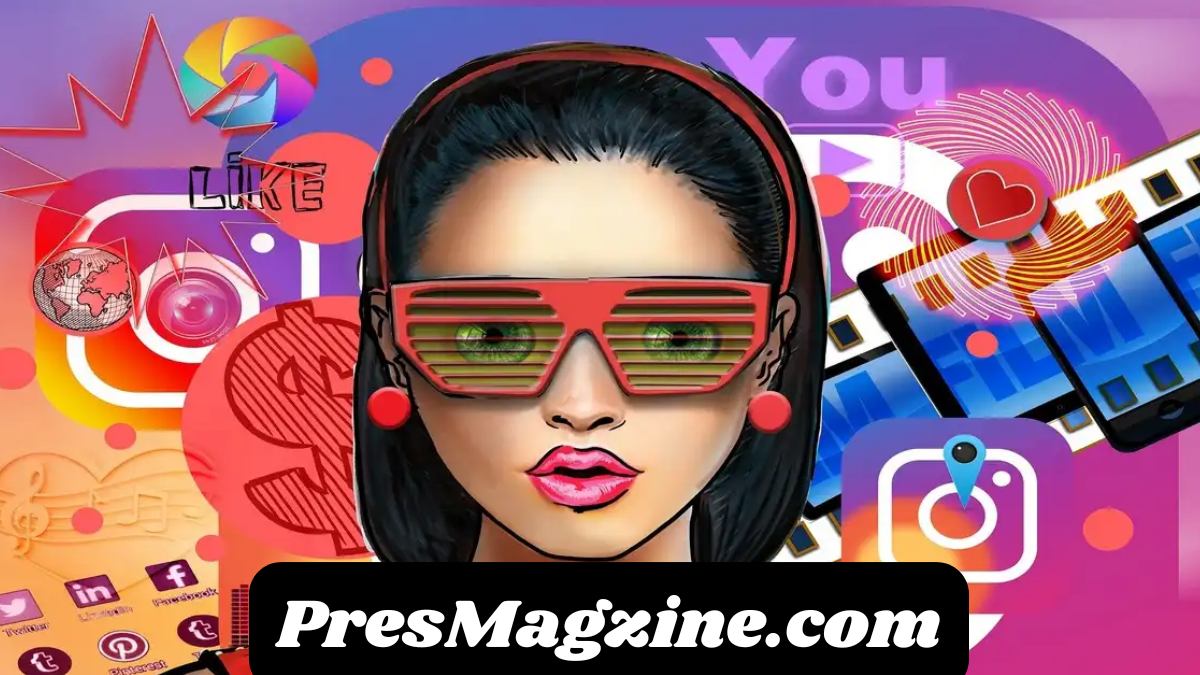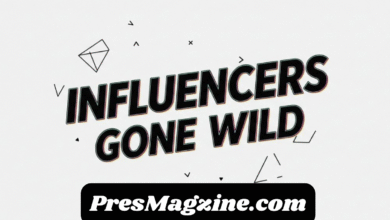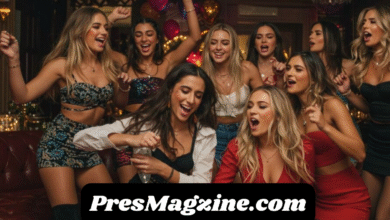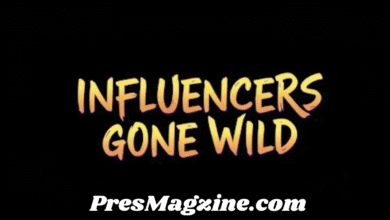The Modern Influencer Phenomenon
In the digital age, the word “Influencer Gone Wild” has transcended its original marketing context to become a cultural phenomenon. These are individuals who have amassed large followings on platforms like Instagram, TikTok, YouTube, and Twitter, turning their online popularity into lucrative careers. They shape trends, endorse brands, and in some cases, sway public opinion. Their voices, amplified by millions of followers, wield unprecedented power in fashion, beauty, fitness, travel, and even politics. However, with this power comes intense scrutiny. The phrase “influencer gone wild” has surfaced more frequently in recent years, signifying a shift in the public’s perception of these once-adored digital personalities.
The Glamour and the Pressure
Influencers often present curated versions of their lives filled with luxury, travel, designer clothes, and perfect selfies. To maintain their relevance, they are under constant pressure to deliver content that is exciting, engaging, and sometimes controversial. In this hyper-competitive ecosystem, the line between authenticity and performance blurs, leading some influencers to push boundaries for clicks and engagement. The term “gone wild” in this context refers to a descent into recklessness—whether through inappropriate behavior, scandalous revelations, or Influencer Gone Wild unethical practices—all in the pursuit of fame or maintaining an online persona.
The Allure of Controversy
Controversy generates attention, and attention is the currency of social media. Some influencers, knowingly or unknowingly, tap into outrage culture to maintain their visibility. They may engage in public feuds, post provocative content, or make offensive remarks—all under the pretense of “being real” or “unfiltered.” While this may bring momentary virality, it also carries the risk of backlash, brand alienation, and long-term damage to one’s reputation. For some, this spiral begins with minor controversies and escalates into full-blown public relations disasters, where apologies and damage control become the norm.
Mental Health and Fame
The psychological toll of being constantly observed, critiqued, and commodified cannot be underestimated. Influencers live their lives in a digital fishbowl where every move is scrutinized by fans and detractors alike. The fear of irrelevance can drive some to take drastic actions, leading to behaviors that fit the “gone wild” narrative. These include oversharing personal details, lashing out at followers, or indulging in substance abuse. Mental health challenges such as anxiety, depression, burnout, and body image issues are increasingly prevalent among content creators, underscoring the darker side of internet fame.
The Fall from Grace
One of the most significant risks influencers face is cancellation. Cancel culture, though controversial in its own right, can swiftly dismantle the careers of those who cross perceived social or ethical lines. Influencers have been “cancelled” for a variety of reasons: racist or sexist comments, culturally insensitive behavior, deceptive marketing, or misleading followers about their personal lives. The fall from grace is often swift and public, amplified by media coverage and online commentary. The same followers who once adored these individuals may turn against them, creating a digital mob mentality that thrives on schadenfreude.
The Role of Accountability
Accountability in the influencer world has become a pressing topic. With great influence comes great responsibility. Audiences, particularly younger ones, are increasingly demanding transparency and ethical behavior from their digital idols. Influencers are being held to higher standards, not just by brands, but by the very communities that elevated them. When an influencer “goes wild,” the backlash is not just about the act itself but also about the betrayal of trust. This shift has encouraged a growing movement toward responsible influencing, where creators are more mindful of their impact on mental health, societal norms, and consumer behavior.
The Business of Influence
Monetizing a personal brand comes with its complexities. Influencers often enter exclusive contracts with brands that require them to maintain a certain image. When scandals erupt, these deals are jeopardized. Companies are quick to distance themselves from controversial figures to protect their own reputations. The business aspect of influencing—often hidden behind the glamor—shows that the industry is as cutthroat as any other. An influencer gone wild can lose sponsorships, followers, and even legal standing, as some have found themselves embroiled in lawsuits or government investigations for fraud, false advertising, or tax evasion.
Cultural Sensitivity and Global Reach
As influencers reach audiences around the world, cultural sensitivity becomes more important than ever. What may seem acceptable in one country can be deeply offensive in another. Influencers who “go wild” often do so by disregarding these nuances, resulting in international backlash. This phenomenon underscores the need for creators to educate themselves and exercise caution when addressing sensitive topics such as race, gender, religion, and politics. The internet never forgets, and one misstep can result in permanent reputational damage.
The Redemption Arc
Interestingly, some influencers manage to recover from public meltdowns or scandals. Redemption in the digital age often involves public apologies, social media hiatuses, rebranding, and sometimes even mental health advocacy. These comebacks are carefully managed, often with the help of PR professionals, and can result in renewed popularity. However, this path is not available to all. The success of a redemption arc depends on the nature of the offense, the sincerity of the apology, and the loyalty of the fanbase. For some, “going wild” becomes a turning point; for others, it marks the end of their careers.
The Audience’s Role
Followers are not just passive consumers; they play an active role in shaping influencer behavior. The demand for constant content, the tendency to idolize flawed individuals, and the culture of online outrage all contribute to the influencer ecosystem. In many cases, audiences reward controversial behavior with views and engagement, which further encourages a cycle of sensationalism. Recognizing the power of their attention can help audiences make more informed choices about who they support and why. Ethical consumption of content is as important as ethical creation.
Media Sensationalism and Double Standards
Traditional media outlets have also capitalized on the influencer gone wild narrative. Headlines focus on scandalous behavior, magnifying incidents that might otherwise have gone unnoticed. There is often a double standard at play—where traditional celebrities may be forgiven for certain actions, influencers are held to different, sometimes harsher, standards. This disparity speaks to the evolving definition of celebrity and the different expectations placed on digital creators versus those in Hollywood or the music industry.
Legal and Ethical Implications
The rise of influencer marketing has caught the attention of regulators. Governments and watchdog groups are increasingly monitoring influencer behavior to ensure compliance with advertising laws, especially when it comes to disclosing paid partnerships. When influencers “go wild” by engaging in deceptive practices, they not only risk public backlash but also legal consequences. The ethical dimensions of influencing—such as promoting harmful products, exploiting followers, or fabricating personal stories—highlight the urgent need for clearer industry guidelines and accountability mechanisms.
Influencer Culture in Transition
The era of the untouchable influencer is waning. Audiences are gravitating toward authenticity, relatability, and social consciousness. Micro-influencers, who have smaller but more engaged audiences, are gaining popularity. The influencer gone wild archetype is increasingly seen as a cautionary tale rather than a template for fame. Platforms themselves are evolving, with new features that prioritize transparency and user control. This transformation signals a maturing industry where trust, consistency, and integrity are the new currency.
The Human Behind the Screen
It is easy to forget that influencers are human beings. The glamor and controversy often overshadow the real struggles they face. Many are young, inexperienced, and navigating a complex digital world with little guidance. When an influencer goes wild, it may be a cry for help, a result of burnout, or a manifestation of deeper issues. Understanding the human side of this phenomenon can foster a more compassionate and constructive dialogue about the responsibilities of fame, the pressures of performance, and the importance of mental well-being.
A New Ethical Landscape
As social media matures, so does the conversation around ethics and responsibility. Influencers are no longer fringe figures; they are cultural powerhouses. With this influence comes the need for a new ethical framework—one that balances freedom of expression with accountability, creativity with credibility, and ambition with integrity. The influencer gone wild is not just a story of excess; it is a reflection of the broader challenges and contradictions within digital culture.
Looking Ahead
The future of influencing lies in sustainable fame—where individuals can build meaningful careers without sacrificing their mental health, ethics, or authenticity. This shift requires effort from all sides: influencers must commit to responsible behavior, audiences must support positive role models, platforms must implement better safeguards, and brands must prioritize values over virality. In this evolving landscape, the influencer gone wild serves as a stark reminder of what happens when fame outpaces maturity, and when the pursuit of attention eclipses the value of trust.
Conclusion
The phrase “influencer gone wild” captures a spectrum of behaviors that range from the reckless to the regrettable. It speaks to the volatility of internet fame and the challenges that come with living a life in the spotlight. As social media continues to shape modern culture, the stories of influencers who have stumbled—and sometimes fallen—offer important lessons about authenticity, responsibility, and the true cost of digital stardom. Only by acknowledging both the glamor and the pitfalls of this world can we begin to foster a healthier, more ethical digital ecosystem where creativity thrives and integrity prevails.




